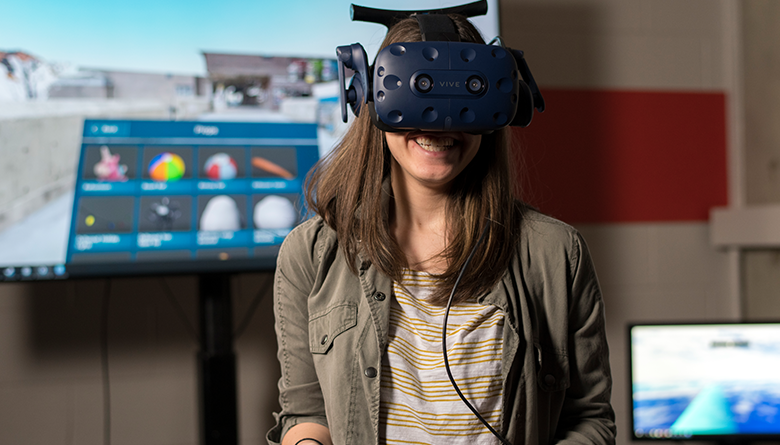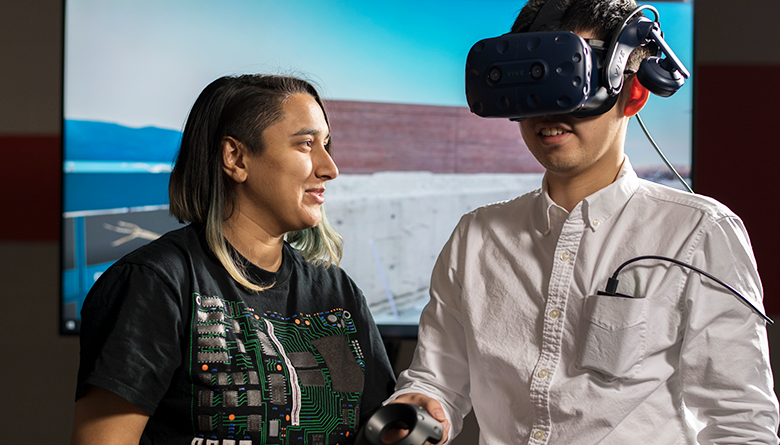By Jason Hicken and Rich Radke
We learn things by doing them. By getting our hands dirty. From solving differential equations to mastering an instrument, your best bet is to practice, practice, practice. But what if practicing what you want to learn is difficult or impossible? What if you want to understand how different structures respond during an earthquake? Or how to maintain the electronics on top of a wind turbine? Or how to deal with a nuclear meltdown in a power plant?
Despite years of “book learning” study, college students often graduate unprepared for some of the most challenging problems they may face in their professions, because we as educators can’t replicate the environments necessary for them to practice, practice, practice. We believe this may be on the verge of changing thanks to the recent wave of easy-to-use virtual and augmented reality systems.
Augmented and virtual reality systems allow us to immerse students in almost any learning environment that we can imagine. Virtual reality (VR) uses a headset that totally blocks out the real world to provide a realistic 3D view that moves as the user looks around. When using a high-resolution device, it’s easy to forget the real world and become immersed in the virtual environment. Augmented reality (AR), on the other hand, typically uses a phone, tablet, or special glasses to layer computer-generated graphics on top of the real world. If VR is “Ready Player One”, then AR is Iron Man’s helmet.
Why are we so excited about these technologies? Imagine you’re an aerospace engineer designing a new aircraft. You enter a VR design environment; a miniature version of the aircraft floats in front of you. You reach out and start making changes, like an artist shaping clay. Unlike a clay model, the VR environment immediately shows you how your changes impact the aircraft’s performance, animating air moving over the wing and computing parameters like drag. You quickly learn which shapes meet your design goals.
We believe VR/AR technologies are especially promising for teaching and training engineers, because of their interactive and compelling nature. For instance, rather than showing students images or videos of molecules, we can ask students to walk around a molecule sitting on the table in front of them and manipulate its atoms. Rather than asking engineers to read an instruction manual or watch a video, we can use AR to layer the instructions directly on top of the machine they’re working with.
These examples just scratch the surface of potential uses of VR and AR in engineering and education. Students and faculty alike are excited by the Rensselaer Augmented and Virtual Environment, or the RAVE, a large lab in the School of Engineering that contains the most up-to-date VR and AR technology. Student groups are using the RAVE for diverse projects, including drone navigation, asteroid modeling, and 3D modeling of campus environments. We welcome you to check it out the next time you’re on campus!
To see the RAVE in action, click here.




